Coffee Conversations - Labor Shortages & Smarter Roofing Solutions - PODCAST TRANSCRIPT
May 27, 2025 at 5:00 p.m.Editor's note: The following is the transcript of a live interview sponsored by Hunter Panels. You can read the interview below, listen to the podcast or watch the recording.
Intro: Good morning and welcome to Coffee Conversations from the Coffee Shops. My name is Heidi Ellsworth and as you all know, Roofers Coffee Shop brings you these kind of conversations all the time. Wayne is also coming in right now, so we are all good. Yay. We have had quite the morning. So those of you who were on earlier, thank you for coming back and for all of you coming in right now, this is going to be amazing conversation on labor savings. It's a top issue in our industry where we are really looking at how can we save time on the roof? What do we do with the labor shortage? So today we've brought the experts from Hunter Panels and from Delta Rep Group to really talk about some tricks of the trade and some products that are really making a huge difference.
Heidi J Ellsworth: So excited today. A little housekeeping. This is being recorded and will be available within 24 to 48 hours. The chat is open, so please tell us where you're from, who you are, your company. Give us a little bit of information in there. Feel free to chat to each other and to all of us. Please ask questions and please make comments as we go along. That's what a coffee conversation is all about. Also, be sure to share this when you're done. Like I said, it will be available 24 to 48 hours on demand, so be sure to share this out to your company. This is the kind of information that can really change a business.
Heidi J Ellsworth: So let's get started. We've got everybody on. We are looking good this morning, so here we go. I would first like to thank Hunter Panels who is our sponsor today and really came up with a lot of the ideas. So great company. I used to work with them very closely and very excited to have them here today. And speaking of Hunter Panels, I am really excited to welcome Justin Andrews, the commercial roofing sales manager for Hunter, to the show. Justin, good morning.
Justin Andrews: Good morning.
Heidi J Ellsworth: Please. I would love it if you would introduce yourself, tell us a little bit about what you do with Hunter.
Justin Andrews: I'm Justin. I started with Hunter about nine and a half years ago and I was the southeast regional for about nine years and have since moved into a more national footprint role and I take care of certain accounts within Hunter but help the regional managers and our reps. And a lot of what we do is leverage our taper department and the services that we provide to the field to just provide the best experience for manufacturers and contractors and distributors alike.
Heidi J Ellsworth: I love it. Hunter's really known in the industry for the service.
Justin Andrews: That makes me feel good because that's what we try to do every day.
Heidi J Ellsworth: We hear it all the time, so that is so great. Well, speaking also of Hunter, I am so excited to welcome Tim Rood of Carlisle Construction Materials overall with the tapered department manager. Tim, welcome to the show. Can you introduce yourself?
Tim Rood: Yeah. Hi. I'm Tim Rood. I am the tapered department manager at CCM. I'm based out of Buffalo, New York. I've been with Hunter for five and a half years. You can see that there. And before this I was in distribution, so been in the fun world of roofing for over 10 years now.
Heidi J Ellsworth: I love it. I love it. And I have to tell you, I am pretty excited about these next two people joining us this morning too. We've done a lot together. We worked together. I don't know. It's just such a great collaboration and I'm so excited to welcome Wayne Heironimus to the show. Good morning, Wayne. Oh Wayne, we can't hear you right now. Okay. Wayne, we're going to unfortunately-
Dawn Holsinger: Oh, there you go.
Heidi J Ellsworth: Oh, there we go.
Dawn Holsinger: Think we can hear him.
Wayne Heironimus: Can you hear me now?
Heidi J Ellsworth: Yes. Okay. Awesome.
Wayne Heironimus: Hi.
Heidi J Ellsworth: Okay.
Wayne Heironimus: Yes, you can hear me?
Heidi J Ellsworth: Yes. Go ahead and introduce yourself.
Wayne Heironimus: Okay. Wayne Heironimus, Delta Rep Group. I started roofing in January. It's been a great exciting career. I won't tell you which January, what year in January I started, but it is been a while. I went to school, I had some time in the military and the rest of the time I've been a roofing manufacturer's representative, always focused on commercial roofing and building envelope and really have enjoyed the ride.
Heidi J Ellsworth: I mean premier roofing manufacturer group in not just Florida but in the country. So thank you for being here today. Thank you always when I'm like, oh I wonder, I call Wayne and Dawn and they help me. And speaking of Dawn, Dawn, welcome to the show. I'm so excited to have you here. My National Women in Roofing partner. Can you introduce yourself?
Dawn Holsinger: Good morning. Yes. I love that I get to be part of National Women in Roofing. I'm now on the executive board, but let me back up. I've been in roofing over 23 years. I've always been on the manufacturer side. Delta Rep Group has just had their eighth anniversary and we cover with commercial roofing products the state of Florida east of the panhandle and Hunter Panels is one of our lines. And we do a lot of work in the associations. I'm passionate about supporting our group of community. And that's Roofers Coffee Shop, NWIR and RCASF and FRSA and IRE and NRCA. We're really heavily involved and we like to give back.
Heidi J Ellsworth: I love it. You guys do. You give back all the time. Some of the coolest events. Everything that Delta has done along with the National Women in Roofing down there and everything you do just for contractors every single day is pretty amazing and we're going to talk a little bit about that. But let's go ahead and get started.
Heidi J Ellsworth: First of all, I want to remind everybody that the chat is open and I see some great chats in here. In fact, I have to say, Wayne, we had someone say thank you for your service. It was Steven. So that was awesome. And we've got some friends on here. Lots of people who are looking at doing stuff. And Alana from Roof Mechanics who was actually on earlier. So Alana, I'm so glad you're back. This is great. I want to start out with really talking about where we're at in the big picture, really looking at the current state of the labor shortage. We talk about it all the time. I mean in our trends report it's the number one issue. People are talking about it. But it's nice to talk about what you guys are seeing right now after first quarter going in ... We're about midway through second quarter now. So Justin, I would love to start with you. What are some of the things that you're seeing nationally on the labor shortage and how contractors are handling finding labor?
Justin Andrews: I think contractors are struggling to find skilled and unskilled labor based on just wage growth and there's a lot of competition. There's competition from other trades, there's competition from other industries outside the building industry. And then there's the perception of the work and the roofing industry in general that I think there's lots of organizations that are fighting that fight and there's now college programs to get young people excited about building industry and roofing trends. So I think we're doing a lot of the work, but there's still a definite struggle there for the contractors to build their teams.
Heidi J Ellsworth: We're seeing it everywhere. And you're right, there is a lot going on, but it takes time to build that and we kind of came a little bit late to the game and we're all working on it right now, but huge amounts of progress. Tim, from a technical side, what are you seeing or hearing from contractors about really their struggles with getting skilled labor?
Tim Rood: I don't hear a whole lot of it just as a designer standpoint, but from the installation standpoint, tapered is a daunting thing when you get a shop drawing handed to you and told to put it on a roof. So the actual skill of installing tapered materials, that labor force is a lot harder to find. So we have some tips and tricks to make it a little easier on the contractors that we'll go into in a little bit.
Heidi J Ellsworth: Yeah. I think that's key. How are we making it easy? That's what this whole conversation is about. Dawn, what are you seeing in Florida? What are you hearing from the contractors?
Dawn Holsinger: Well, I actually attended a roofer meeting last night and they had someone come from the junior achievement and they're going into the high schools and they're speaking to them about the trades. And one of the things he spoke to our group about was that there's plumbing and all these other trades that are coming to the table. We need the roofers to come and get into these meetings to tell the high school students about it. And one of the ladies, she had gone to the session at the high school and she told all those guys, "There's money in roofing. You got to spin it a different way."
Heidi J Ellsworth: So true. I know. People don't realize. It's kind of misconceived before and what we're going to be talking about today with the technologies and everything that's happening and how things are different, people, they don't know.
Dawn Holsinger: And NWIR is doing girls camps and we're trying to get involved in Skills USA to try to get the word out of getting more people into this industry because they're retiring out.
Heidi J Ellsworth: Yeah. A lot of retiring. So Wayne, what are you seeing? Especially around some of those lines with we are losing, we have a lot of people retiring and how are we doing on bringing the young people in or helping the people who are still here?
Wayne Heironimus: Well and everything I'm talking about is from a Florida perspective. We're responsible for representing Hunter Panels in the state of Florida. And I will tell you that the contractor shortage besides the labor force is aging. You don't see a lot of young people being drawn to roofing. There might be sexier places to go when you're at that age, more exciting things perceived. And then on top of that we have a tremendous new construction market. We're having our repairs from the storms that are ongoing. Again, we're only eight months and seven months into two major hurricanes. We're still fixing that. We're doing our normal re-roofing. We're fighting a really tough climate. It's always challenging. And all of that's going on at the same time. We're trying to do more with less people. And that's the current situation and it's been that way in Florida for a while.
Wayne Heironimus: It's not getting better. The solution end of it is a whole other discussion. I do think some of the answers lie in education and training and it basically starts with associations. There's the NRCA, the FRSA, the local affiliates. They all complement each other. And I think when you get down to those local affiliates, that's where the hands and knees are meeting the roof. That's where it's happening. And then as you work up the organization, you get the support from the training interpretation codes. We have the toughest codes in the country. And then at the NRCA, advocacy training. And we are also the NRCA membership representatives for Florida. And I tell you NRCA's major concern is addressing the quality of the workmen and the shortage. I work closely with a gentleman named John Goodman. There's outreach programs that we're on the edge of introducing. There's ongoing programs like pro-certification that work on efficiency and ensuring you're getting it right the first time. And if you're short people, you got to get it right the first time.
Heidi J Ellsworth: And you know what, John just ... Thank you, John and thanks for coming on earlier today too and helping us. John was just saying the TRAC program introduces tapered skills to new roofing programs. So it's really this combination of the industry working together from manufacturers to associations to manufacturers reps to everyone else to bring that training. And Wayne, I'm going to start back with you again. What do you see as some of the biggest challenges that contractors are facing in getting that training to their employees and especially working with smaller crews and maybe less experienced crews than back in the day?
Wayne Heironimus: I think the first thing is you have to understand the value of training and you have to have the right approach. Training's not something you do on a rainy day. It's not a time filler. You have to really understand the benefits of training and be ready to meet those challenges that you face. And again, down here it's weather, it's code compliance, it's getting it right the first time. And those guys that are embracing that ... And you got to find people that'll believe you, not just listen to you. And when they believe, there's absolute benefit from training.
Heidi J Ellsworth: That's so true. Dawn, I mean you guys, you're involved in training a lot on a lot of different levels, but as you're really seeing these contractors who are dealing with smaller crews and less experienced possibly crews and then all this demand that Wayne was talking about, what are contractors talking to you about? What are they looking for and how are you guys helping with that?
Dawn Holsinger: Well, we're trying to fit it into whatever timeline they have because it's not just a cut and dry, this is it. This doesn't work for every different contractor. So leadership has to be bought in to take the time. It is important to train. It will save you on the backside, but they have to lose time on the front to actually get the training done. And they have turnover so it's ongoing. Like Wayne said, we're always having to train. Everyone can always continue to learn, things are evolving and then there's turnover of your labor.
Justin Andrews: When Dawn says the turnover piece, I think some contractors are reticent to train full swaths of people just to have them leave and go work for a competitor. And that's definitely a risk. And Shane in the chat says training has to be intentional. And the whole idea behind us doing our training and the contractors doing the training for their staff is to create these roofs that perform the best that they can. And so that's what a lot of we're going to talk about is. It's about raising the quality of the roofing industry. Not just meeting code. How do we get these roofs to perform the best way possible? I think a lot of times we default to just doing things the way they've always been done because they work. And so that's a double-edged sword because you have to be intentional and I love that word, but you have to be intentional about it and you have to go against that habit of, well, this has always worked, so let's just do it that way.
Heidi J Ellsworth: And I think as we're looking at that, Justin, really Aloe Vera, I hope I said your name right, but I wanted just to point out I thought this was a really good comment in there in recruiting that sometimes they're hearing on that people don't want to recruit non-skilled or people who don't have experience, but they are willing to work in the industry. So as you think about that and really kind of think about these crews ... And what you just said is true, sometimes people think, "Well, I'm training everyone, but then they're going to leave." That really is not the right way to think about it culturally because heard a lot of contractors who've also said, "Give me somebody who doesn't know anything about roofing because then I don't have to break bad habits."
Justin Andrews: Exactly.
Heidi J Ellsworth: So what are you seeing that way? I mean do you see a lot of new really with zero roofing experience folks coming into the industry, Justin?
Justin Andrews: I think it would be great. I did not come from a roofing background into Hunter Panels and obviously I came in as a sales guy. But I was able to have extremely experienced individuals teach me and to learn the right ways. And so I agree with your give me somebody who's willing and gosh, you can make a superstar out of those people.
Heidi J Ellsworth: As we're going through that. I think that's the same thing. I think that's why recruiting is so important and also why training as a culture is so important. This is what we're hearing from on both John and Shane on here from NRCA, thank you both for being on here, is really making training as part of the culture and not an overhead expense. It's really part of how it works.
Justin Andrews: Fits into the whole ethos of hunter panels too, because we'll train anybody that'll listen.
Heidi J Ellsworth: Yeah, I love it. Okay, so one of the things that, Justin, I want to put this back towards you again, that I want to talk about is that it's about training. It's always about training, but it's also about the manufacturers really bringing products to the roof that not only make it easier to train and easier to understand, but also save time and labor so that you don't need as many people, you don't need as much skilled labor. It's easier to train on that. Talk a little bit about that and about your mission to really provide that for contractors to help them get through this.
Justin Andrews: So we take a pretty holistic approach and I may punt this to Tim because he's the manager of our tapered department. But we take a pretty holistic approach where we're designing the tapered layout for folks, but we're also willing to follow it from start to finish and answer questions and deal with problems that come up. Roof plans aren't always 100% accurate. Measurements aren't always 100% accurate. And Tim's team deals with this every day and the assistance is what we really want to focus on. The layouts just the first step.
Heidi J Ellsworth: Let's put it together. So Tim, why don't you start us at the beginning? And I'm going to pull up some slides here. Let's start us at the beginning of what it looks like to really ... What is tapered insulation and why does it make such a difference on the roof and on kind of this whole labor issue?
Tim Rood: So if you look at a roof with a flat deck with nothing on it, the water doesn't have a way to get off the roof, it doesn't have a way to get to the drains or the gutters or the scuppers, so you don't want to have that water sitting up there for long periods of time. You'll have vegetation growth, algae. Expansion and contraction in the colder areas are going to cause seams to pop on your roof. You want that water off the roof. That's where the tapered insulation is going to come in. It's going to be used in conjunction with flat polyiso and it's going to basically be a puzzle that you're going to put on the roof to move the water off the roof into the drains of the scuppers or the gutters or however it's getting off the roof. But on the screen here, there's multiple ways to design a roof.
Tim Rood: This is five of them. And on the left side you're going to see what we call a four-way roof design and that's going to be the best drainage but also the most expensive option. And then as you move over to the right, the far right is basically a two-way without any way of getting to the drains. It's just going to sit in the valleys on those drainage points. That's going to be your worst drainage, but your least expensive. So we're going to work hand in hand with the contractors or the reps or the architects to create a design that is going to do what you want it to do. But there's many options and many ways to do it. And like Justin said, we do want to work from start to finish on these jobs, from pre-bid, go up on the pre-bid walkthroughs all the way until it's fully installed on the roof. That's what our department is here for and we'll just work hand in hand the whole way.
Heidi J Ellsworth: And when we talk about really bringing the products, it's not just always products. It's services too that help the contractors reduce their need for labor and also for skilled labor. Giving them a chance to train because things are done. So in the old days, I remember you would have panels come up on the roof and you had teams that were shaving, that were cutting panels. So just talk a little bit about that. I mean that really took some skilled labor, right? They were designing the drainage, they were designing the roof on the roof with just flat panels.
Tim Rood: So tapered roof insulation, like I said, is daunting to look at from the start, just green, but it's not overly complex once you know what you're doing. That's where the hands-on training comes in. If you have us out to do a little hands-on training, we'll do a mock-up. We'll show you how to cut a sump, how to cut a hip or a valley and maybe even do just a small roof demo. Once you have that knowledge, it's not as overly complicated as it looks when you're just handed a shop drawing and say, "Put this on the roof." So we have videos on our website that just came out that are going to go over some of the basic nuances of tapered design. That's how I learn pretty much everything. If my dryer is broken, I'm going to YouTube and I'm going to check a video on how to fix it. So there's a lot of ways that we can help get that knowledge and that experience to make the contractor feel more comfortable putting this on the roof.
Heidi J Ellsworth: So talk a little bit about just how that all works between what you're going to be providing and what Hunter does with tapered systems pre-design, going through that whole thing and compared to maybe the way it used to be done that not as labor savings.
Tim Rood: So what you're going to do is you're going to send a roof drawing, hopefully with some specs, to our department and we're going to take that and we're going to make a design for you. We might go back and forth in some emails to get some more information, but we're going to design a roof for you that's going to work and we're going to give you a submittal or shop drawing that's going to show you how to put this down on the roof itself. We do have this up here on the presentation is one of those options that are going to reduce the labor required and material required to put something on the roof. So on the left side is our standard repeat using two boards and then two inch fill to continue that repeat and then on the right side is what we call the extended panel option. This is a four panel repeat, so you can see the X, Y, Z and ZZ panel. And then instead of using two inch, we're using four inch and we're starting our repeat again. So that's going to reduce ... If you want to go to the next slide, Heidi and then just hit play on both of the videos.
Heidi J Ellsworth: Yep. Here we go.
Tim Rood: So you can see on the left side is that standard panel repeat going down and on the right side is the same run, but using extended panels and you can see the adhesive applications required. Obviously on your two panel repeat, you're going to have a lot more layers using that two inch boards and only two panels of repeat. So you can see just how many layers of adhesive are required for a standard panel. Whereas if you go to the right side on the extended panel, you can see the lines there. It's only 24 panels applied versus the 42 panels applied on the left. So if you have long runs and you're putting this down in adhesive, the extended panel option is kind of a no-brainer. It's going to be lower squares applied, lower adhesive costs, so lower labor as well.
Heidi J Ellsworth: So these are some of the tricks of the trade. This really can make a huge difference on the job. Justin, can you talk a little bit just from what Tim is sharing with everybody, what you're seeing from a sales side and just from what the contractors are experienced really kind of working with you all to work through this?
Justin Andrews: One of the things that comes up all the time with a standard versus extended repeat and some of these other savings products that we have is contractors will ask us for a standard repeat. Because they have this big job that they're bidding and this is what they want, this is what they've done and well, we know that they're going to be a whole lot better off in the bid process, in the application process from start to finish by using some of these techniques and products. And so we will recommend on the sales side, we do a lot of training on the sales side to train the contractor to ask for the right thing in the right situation. Because if we're their guys and we teach them how to win, then when they win, we win. I'm a sales guy. I like to win. So that's kind of the thing is we really want to train people as much as we possibly can so that we can continue to help them and we all just win together.
Heidi J Ellsworth: I love that. And Dawn, when these systems are being delivered and they're working with Hunter and they're ... Because we're talking about Hunter and talking about tapered insulation today, but this really goes across the board, this goes across the board of contractors working with manufacturers to get the best systems, the best labor savings, but performance and quality. What are you seeing, Dawn, on that and how are the contractors using this to really save money and see the win Justin's talking about?
Dawn Holsinger: Yeah. It's actually a difficult conversation because you have a lot of old school guys who are used to this sump, for perfect example. If you talk to a contractor who's been doing it a long time, "I can cut a sump real fast in the field, no problem." Except it is not going to be engineered and done the way it is in a controlled setting cut perfectly. I mean, if it doesn't cut right, they're stomping their foot at the drain and smooshing the ISO instead of buying the sump, which is already pre-manufactured and putting it in and building away from that so that now you have ... And this is the area where the leaks are. So it comes back to education again and re-educating those that say, "I already know how to do this. I don't need it." This helps you work smarter.
Heidi J Ellsworth: You're bringing up something too that I think is really interesting and that's the whole prefabrication part of this. I was in a really great seminar, totally different on ... It was on residential. But they were talking about they're basically building homes, prefabbing homes in the factory and then bringing it out and building it. And the person said, "Would you build a car in your driveway? No. It's already built for you." And so this shift of really looking at prefabrication in the factory with the manufacturers and then being able to bring that onto the roof for quality control, labor savings, all of that. Dawn, how do you communicate that this isn't just about training the field workers, this is about training the owners to really think different? How do you go about that?
Dawn Holsinger: Well, we also have all this waste and the waste is on the roof and the wind is blowing and they're trying to cut and the stuff's flying around. I think you have to get into when you have the two quotes where you show the labor savings. I think you have one of those when we get moving forward that'll show this is how your labor savings is by using this versus this. It costs you more on the front side, but it saves you money on the back side.
Heidi J Ellsworth: It really does. And Wayne, you're nodding. How are you seeing this moving into the field?
Wayne Heironimus: Because what everybody's saying is true. We recently supported a project down in Miami and contractor, we convinced him to use Hench sumps extended panels. Exactly what Tim's talking about. It was for a retail re-roof of strip center. They estimated they had a 22% reduction in install time and it avoided an extra day for the crane. Now the big one is, I thought was cool, the GC was so impressed with the efficiency and the consultant, they went ahead and awarded the next phase of the project with no re-bid.
Heidi J Ellsworth: Wow.
Wayne Heironimus: That's the things that turn you from listening to something to believing something. So trust me, these pre-manufactured panels, working smarter and back to getting it right the first time. You still have to have the trained people.
Justin Andrews: Yeah. There's a lot of downstream savings that can occur as well because Wayne just talked about crane fees. So you're saving on crane fees. When you don't ship material that is going to eventually be waste, you may save on freight as well because you can ship less material and you don't have to throw it away.
Dawn Holsinger: And pay for that. You have to pay for disposal.
Justin Andrews: You have to pay for disposal as well. So part of our training is let's not just look at the problem of getting water off the roof. Let's look at the holistic cost of performance of the application and then the performance of the roof itself, but also all of the costs that are just incurred in doing the job to begin with. Freight, waste disposal, labor, crane fees. I mean, there's a lot of downstream costs.
Wayne Heironimus: Well, I'll jump in for just a second. The highest point of elevation in Dade County, Miami is the dump and it gets bigger every day, taller and they monitor its height. So that's going back to the downstream.
Heidi J Ellsworth: Right. You got to laugh out loud on that one, Wayne, just so you know.
Wayne Heironimus: It's true.
Heidi J Ellsworth: I love some of these comments. So Lorna, who is very active with National Women in Roofing and she said, "Reframing the roofing industry as a professional career rather than just vocational training is crucial. This shift is essential for attracting a broader, more diverse pool of talent and elevating the status of the industry." Thank you, Lorna, so much. And when I read that, it just seems to me that prefabrication, doing things different, looking at the technologies behind what we're doing and the way sustainability, all these things are so important to the next generation and that's what we have to be really thinking about. And Justin, you're giving me a nod. Talk a little bit about that.
Justin Andrews: Well, for me it's always about, okay, we can do this and yeah, we can do a lot of it, but how do we do it better? I think that that's a big shift and I loved what Lorna said is we need to attract a diverse pool of talent and elevate the status of our industry. Well, how do you elevate the status of something? Well, you do it better. And so that's what we try to do every day is help contractors continue to get better. And those are the ones that are going to keep winning.
Heidi J Ellsworth: Yeah, they really are. Michael Black is on here. Hello Michael. I'm always so happy to see you. And he has a question, but Michael, hold on. I'm going to come back to your question just a little bit because I have a very good answer for you. So hang in there. I would love it, Tim, if you would walk us through these next couple slides, the one that's up right now and let's just talk a little bit about kind of circling back about how time savings, waste savings, everything that Don and Wayne and Justin are talking about. Can you kind of talk us through this a little bit?
Tim Rood: Yeah, this slide is showing how to create an eight by eight drain sump. You're going to be using eight panels and you're cutting them in half diagonally and basically throwing out the other half. So basically what Dawn said earlier about wind blowing on a roof, chasing down these triangle pieces or filling a dumpster up with these triangle pieces, if you've got 50 drains on a roof, you can create these in the field and cut hundreds of panels or you can buy these pre-cut, pre-made sumps that are made in the plant and just unfold them and drop them right in your drain. There's no cutting, there's no waste. You're not filling dumpsters up, you're not chasing pieces across the roof. So this is just one of those tricks and helpful products that we can give. I think the next slide is a four by four. It's the same thing.
Tim Rood: The four by four is even more waste. You're only using 25% of the board. The rest is garbage. And it's 12 cuts to make one of these four by four sumps. So if you can stop or if you can limit the amount of cutting and waste that you're doing, it's just going to speed up the process and it's going to look a lot nicer too. I mean, you can cut really, really well, but when you get to your 10th sump, you might stray a little bit. So these are all going to be the same every time. Perfect cuts. And like I said, you just unfold them and drop them right on the drain. It takes a second.
Heidi J Ellsworth: And the crews are working smarter and for the contractor, they are walking a roof afterwards that looks great and uniform. And Dawn, you were just nodding. I mean you're walking with a building owner up there. You want as a manufacturer's rep or an architect who you've worked with or the contractor, you want it to talk about the importance of it, of how good it looks besides performing, of course.
Dawn Holsinger: Well, it's funny because you will talk to some people and they say, "I don't care how it looks." They care how it looks. It's expensive. When you come back and you look and it doesn't look good, you just spent all this money. When it looks good. And the performance. The roof is the most important part of the building. It's keeping all of everything in it safe from the environment. So it's just a matter of getting them to understand. Honestly, it's very rare where I'm going to let it go where the person says, "I don't care what it looks." Like they do. Everyone cares. Wayne, just think of any hotel you go to. We all see everyone's roof. You get in your room, you open somebody, you're looking at somebody's roof
Heidi J Ellsworth: And we're all talking about it. We're all talking about it. Well and I think one of the big things too is when you're talking about the cost savings. And so Wayne, I'd love for you to talk a little bit about how important this is out in the field as you're talking with your contractors, architects, building owners. I mean, you guys are in front of everyone when you can show them because of waste and because of labor savings, they're saving money or they're building their profits, however it may go.
Wayne Heironimus: We deal with a lot of misconceptions about taper. Wouldn't it be easier to just throw a board up there instead of going through this process of taper? And a lot of times you hear it's too complex, it's too expensive. In reality, it's risk management. And a lot of times I try to ask instead of how much is this going to cost? "How much is it going to cost if we don't do this? These roofs in Florida ... And everything goes back to Florida. In Florida, we operate, as I mentioned before, under an extremely strict building code. So tapering a roof, that's just not a best practice. That happens to be the law and those roofs are inspected. Florida building code sets a strict minimum standard for what you're doing on a roof. It's not the best standard, it's the minimum. So to get that roof to slope so it won't blow off, minimum standards. Products that don't meet those requirements can't pass inspection. That means you're going to get them redone or wind up in a place you don't want to be. So I suggest some contractors, anybody should get your design professionals either from your local reps involved early and back to getting it right the first time. That saves money and that gives you the product that you want.
Heidi J Ellsworth: Yeah, that's so true. Walking through this, as you're looking at this with the labor and handling savings and as you're talking to contractors, I think that is so important. So Justin, I'm sure you do this every day. Your team does this every day. Tim, you do this. Can you guys kind of talk us through this for the contractors watching today, how this can make such a difference for them?
Justin Andrews: Yeah. It's not always just about the polyiso cost. It's not about the tapered system cost. Because if you look at this example, the extended panel system cost for the actual materials of polyiso, it's more expensive. But when you look at the entire cost of the system, reducing adhesive greatly because of the actual squares applied. So adhesive costs go way down. And then there are contractors on here. Contractors estimate their jobs based on the number of squares applied. So you have less squares applied, your estimates for labor costs are going to go down. And when you're putting together a bid, all of this is extremely important for you to be able to win that job. I know I talk about winning all the time, but for you to be able to win that job is extremely important. And we will be in situations where we know if you go in with a standard panel system, you are not going to win that job. You're going to lose. And so Tim, you can add to that if you have anything.
Tim Rood: Yeah. The left side is that standard panel system, the two panel repeat. The right side is your extended panel repeat. If you get handed two quotes for just the ISO, you're going to see 94,000 and 100,000 and everyone's the same. I'm going to want the cheaper one, the 94,000. But when you factor in, like Justin said, you factor in those squares applied, you've got a thousand squares of fill on the left side versus 400 squares of fill on the right side. So those are all layers of adhesive that you're going to be adding in those tanks of adhesive plus the labor to cut and move all this material. When you factor all of that in the extended panel's cheaper. It's just a matter of getting that point driven home that just because the extended ... Paper costs more to make than flat. That is why the extended panel system is $6,000 more or eight to 10% more.
Tim Rood: But once you get past that and think about the big picture, that's where you're going to save the money. You're going to save it in the adhesive and you're going to save it in the labor, but it's a matter of just not looking at the price tag. You have to look further into it. You have to look at the squares applied. And in our trainings, that's what we drive home. We show side by side something this but an actual quote and we can show you what to look for on that quote to see the savings that you're going to have. And it's usually squares applied. Squares applied is the biggest factor. So like I said, if something's going down in glue, it's always going to be extended panel is the best option, but it's a matter of getting that information out there that's the tough part.
Heidi J Ellsworth: When you're talking too about Florida, especially right now but I mean this is everywhere, but in Florida there's such a demand and backlogs. You're able to move your crews to the next job faster. Is that correct, Tim?
Tim Rood: Yeah, yeah. You're on there quicker, you're handling less, you're cutting less, you're throwing away less and you're on to the next job.
Heidi J Ellsworth: Yeah. I think that is such a key point for this is ... And today we're talking about tapered insulation and labor savings, but just for the contractors overall, as you're working with your manufacturers and really looking at this, what prefabrication, what technologies do they offer to be able to move your crews faster, higher performance and stuff? And Dawn, I would love for you to talk about that because contractors have to be coming to you and Wayne and Justin every day asking, "How can I do this better?" Or you're going to them saying, "I have something that we can do better."
Dawn Holsinger: Yeah. I think we have get into talking to some of those either green contractors coming in that aren't set in the standard of way they're doing things or those that are willing and open-minded about the future of savings and ... Not savings. Working smarter. Because it does cost more. It always costs more. When you develop anything that you're implementing to your business, on the front side, you have to invest to make things better. And this isn't any different. It works out that you have to take out the cost, look at the whole picture and then you'll see it later regularly. But you have to bite the bullet in the beginning to be on board to that future innovation.
Heidi J Ellsworth: To do it. That's so true. Okay, we have another question that's come in and we're getting actually a couple of these that are coming through. So before I'm going to go with one from the chat because it was just a great question. Ominique, I hope I said your name right. If I didn't, please correct me. But I loved your question and it was, "I would love to see NWIR or the contractors connect with the colleges as well. When I am trying to recruit construction management graduates, they all want to go to work for the GC." So first of all, I'm going to say email me Heidi@rooferscoffeeshop.com and I will get you in touch with the Roofing Alliance who does the student competition and has student university programs. There's actually going to be a minor in roofing in Clemson within the next year or so.
Heidi J Ellsworth: So I can connect you with some of that and it is happening. So National Women Roofing is also very active in talking to them and so there's a lot going on there. But I wanted to take your question and also I think this is really true. We have a lot of young people coming out of college with a construction management degree and they're wanting to go work for general contractors, but yet we have these kinds of systems that you're talking about that are prefabricated, they're using new technologies. We're doing all kinds of things. How do we get that message? How do contractors go to their local schools and start talking about roofing in more of this technology prefabrication language? Justin, thoughts on how can we continue to do that?
Justin Andrews: I think we said it really early in the show. We're doing the work. It's going to take time to filter through. You mentioned Clemson. I'm going to be, I think, a guest lecturer at Clemson, so that's going to be fun. So we just have to continue to push and we are seeing some people come out of construction management degrees and get into the roofing business. We actually have one that construction management degree, went to work for a roofer, now he's actually one of our reps in the Southeast. And so success stories are happening. It's just time. It's going to take time to change that perception and make roofing one of those hot industries that people want to come out of college and work for.
Heidi J Ellsworth: Yeah, it's so true. We also have a question from Louise. How have you seen costs act comparing standard ... Okay. How have you seen costs act comparing standard panels versus external panels using a mechanical attached system? What is that relationship? So I think it's asking, we're talking about here on the screen adhesives. Do you have a comparison for mechanically attached?
Tim Rood: It's something that you can still look into. Even in this example, you could see at the top, you have a 13 inch high point. At the high point of the roof, that's six layers of two inch and probably an X panel. So that's seven boards that you're going to be cutting, unless it's a full board. You're going to be cutting seven panels there. Even in a mechanically attached system, you're still cutting. Versus an extended panel that's probably three or four boards because you're using that four-inch fill and the extended tapered system. So even in that, if you're going to have a lot of cuts, I could see extended panels still being the better option even in a mechanically attached system. There's just some factors that you got to look into and you can work with us, work with the tapered department, let us drive the ball. We'll get you on the fairway, we'll get you within a nine iron. We'll get you close. Or if your short game's bad, stay off my scramble because mine is too, but we'll get you onto the green too if we need to.
Heidi J Ellsworth: I love it. I love it. Well, first of all, Lorna, thank you. I'm not going to read your whole chat. It is awesome. So if you all are in the chat, check it out. She's talking about really the culture and training and recruiting and it is awesome. I do want to move on to Michael because I did promise him that I would come back here. Michael's question is, "Can you please confirm which supply houses are currently stocking these drain sumps so we can begin gathering?" So I'm going to put that to Wayne and Michael, you may just be talking to Wayne and Dawn, but Wayne, where can people get ahold of all this?
Wayne Heironimus: Well, I can cram five minutes of information into an hour. One of my skill sets. But I've got to go back and Heidi, we've talked about this before. My three A's. Any construction product to be successful has to be available, it has to be acceptable and it has to be affordable. Remember, I've always talked about that.
Heidi J Ellsworth: Yes, always.
Wayne Heironimus: And again, everything's focused to Florida. We produce in Lake City. We have a myriad of distributors. Every major distributor has access to Hunter Panels. Many of them stock it. Reach out to your local rep, tell your local distributor you want it and it should be a very fast, quick turnaround. They're also affordable as we've talked and they're code compliant. And back to the college question, a lot of these large colleges have construction departments, construction colleges like University of Florida, Breaker School of Construction. They are dying to have people come talk to them out of the industry and you can steer them towards roofing right there. Thanks.
Heidi J Ellsworth: That's so true. That's so true. That's excellent. And to continue with Michael and everybody else, one of the things that we talk about a lot, especially ... We always talk about it, but it just seems like this year it's even more important than ever, is that relationship with your manufacturer. Just really understanding what's going on, what new technologies, what services they provide that can help your business go to that next level. So we wanted to share up here, this is really the full service department for Hunter for tapered. So this is not something that you're leaving this coffee conversation just saying, "Well, that sounds great, but I have no idea how to do it." People are walking your crews, your teams to help you with that labor through it every day. And this is Hunter, but I'm telling you, there's other membrane manufacturers, there's other folks out there who are going to do the similar thing. So that's why we really wanted to point this out. Justin, can you talk a little bit about ... Or maybe Tim. I'm not sure. Whoever you want, you guys can step up. On what you provide and how that helps the contractors and the industry overall.
Justin Andrews: Tim, I'll let you go first.
Tim Rood: I like when Justin toots our horn, but I'll speak to it. Yeah, like I said, we're going to start wherever you need us. So if you need us on a pre-bid or even architects, if you need help designing a roof, you just got a flat deck and you don't know how to get water off of it. We work with everyone to get the roof designed that you need and that meets your requirements. In some instances, we can be on the job site for a project startup just to get you off your feet. If something comes up, if an electrician pops a hole or puts a unit up there that wasn't on the plans, we can problem solve onsite as well all the way to the end. And for education, we do offer AIAs, we offer online tapered 101s and then we also offer a little more advanced tapered 101, 201 with hands-on at a local distributor or just wherever you've got room. We can get down there and show you how the basics of tapered insulation installation.
Heidi J Ellsworth: Getting in with those building owners, getting in with those architects. Here's the services and the manufacturer's reps in the field to help you really bring this to the market. I can't believe it. This went so fast. We are at the end of our hour, but I'm also big about let's put a face with a name. So you have Dawn. You have Wayne here in Florida if you're in Florida. Justin's on here from Delta Group too. But these are the faces at Hunter who help every single day make this happen and really bring it all together. So it's just fun. This is Tim's group. Tim, they look pretty outstanding, so thank you.
Tim Rood: They're fantastic.
Heidi J Ellsworth: They're fantastic. And this is our roofing industry and these are the people who are going to help get everything better. So I really loved this slide. We don't do this very often. I thought this was such a great idea. So Justin-
Dawn Holsinger: Look at how many ladies are on there too. See?
Heidi J Ellsworth: Yeah. Love it. Love it. Thank you all. Thank you so much for everything, for a great conversation. This is just what it's all about. And thank you all for the great questions. Man, the great questions, the great chat. This is the thing, if you need more information, whether on the schools or whether on the tapered systems or on labor, we had some great recruiting expertise here, just email us. Let us know. We'll connect you and we'll keep this conversation going. So again, panelists, thank you all so much.
Dawn Holsinger: Thank you, Heidi.
Tim Rood: Thank you.
Justin Andrews: Thank you guys.
Wayne Heironimus: Thanks.
Outro: Thanks. And guess what? We are going to be live with our next Coffee Conversations at the Florida Roofing Show. We'll be seeing Dawn and Wayne there. We are live, so we will have our sound stage out front. We're going to be doing interviews the whole time. Plus we will have our full in-person live Coffee Conversation. So join us. That is in June. I think it's June 5th. But if you look up FRSA, it's there and we'll see you all there because I know there's a lot of Florida folks on here. Oh, yep. June 5th, 2:00 PM local time. Thank you all. Great Coffee Conversations. I'm Heidi Ellsworth. Thank you for the coffee shops for being here and we'll see you next time. We'll see you in Florida. Have a great day.
Recommended For You
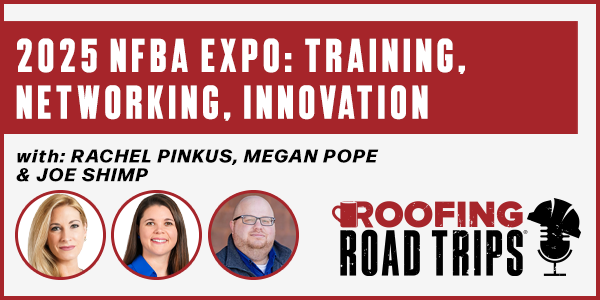
Rachel Pinkus, Megan Pope & Joe Shimp - 2025 NFBA Expo: Training, Networking, Innovation - PODCAST TRANSCRIPT
Read More ...
Harnessing Artificial Intelligence (AI) for Smarter Roofing Operations - PODCAST TRANSCRIPT
Read More ...
Roofing Road Trip S1: E4 with Ken Kelly - PODCAST TRANSCRIPTION
Read More ...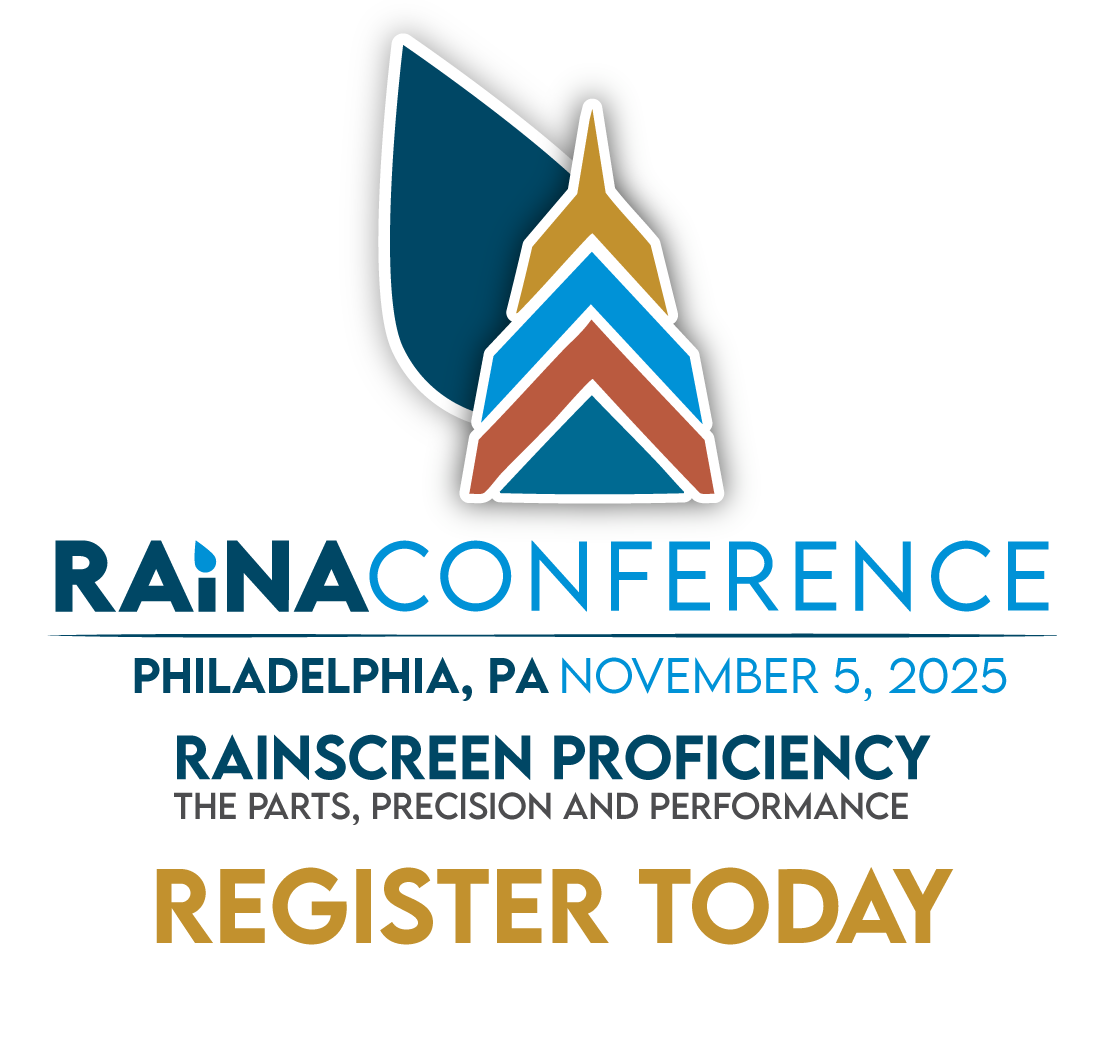




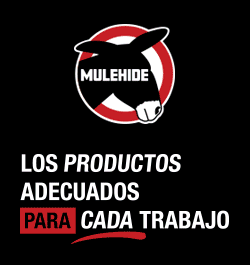



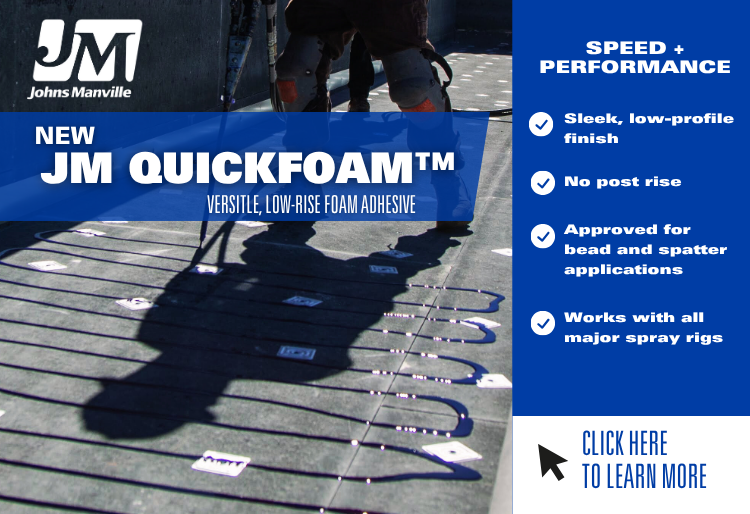

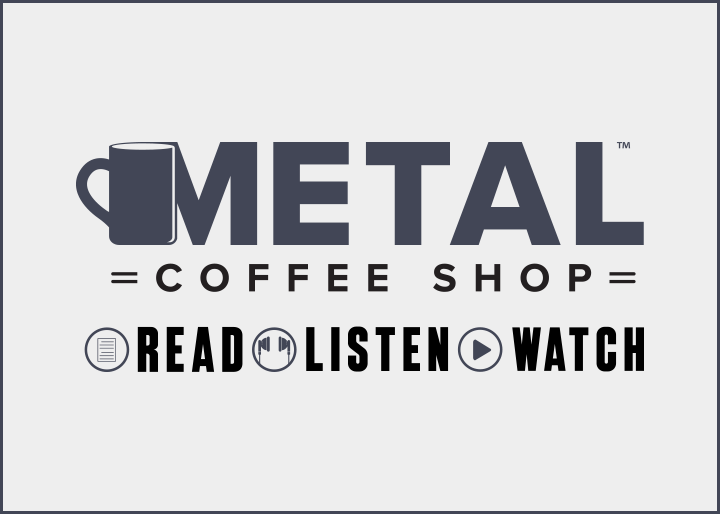





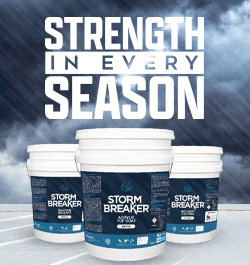

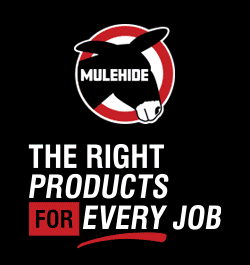
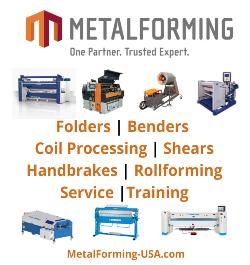
Comments
Leave a Reply
Have an account? Login to leave a comment!
Sign In